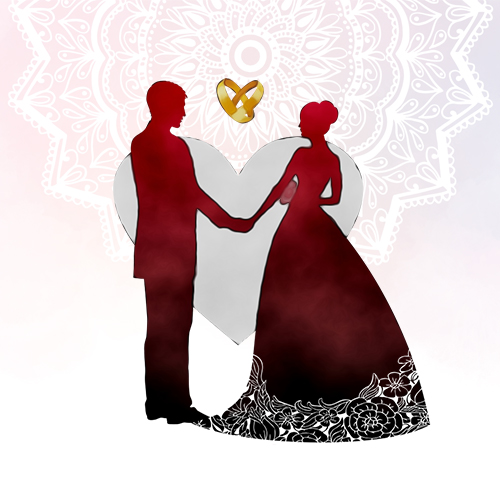
Engagement Pooja
Engagement Pooja, also known as Sagai, Roka, or Mangni, is a significant pre-wedding ceremony in Hindu culture that marks the formal agreement of marriage between the bride and groom. It involves traditional rituals and blessings to ensure a harmonious and prosperous union.
Steps and Procedure of Engagement Pooja
-
Preparation:
- Both families clean and decorate their homes for the occasion.
- A suitable date and time (muhurat) are chosen for the pooja, often with the help of an astrologer or priest.
- The bride and groom dress in traditional attire, and both families gather for the ceremony.
-
Setting Up the Altar:
- A small altar is set up with idols or pictures of deities, especially Lord Ganesha, as he is the remover of obstacles.
- The altar is decorated with flowers, lights, and incense sticks.
- All necessary items such as a lamp (diya), incense sticks, flowers, fruits, sweets, rice, turmeric, kumkum, and engagement rings are arranged.
-
Invocation:
- The ceremony begins with the invocation of Lord Ganesha. The priest or the eldest family member chants the Ganesha mantra, "Om Gan Ganapataye Namah," to seek his blessings.
-
Main Rituals:
- Sankalpa (Resolution): The priest or a senior family member takes a vow (sankalpa) to perform the engagement rituals for the well-being of the couple.
- Ganesha Pooja: A brief pooja is performed to Lord Ganesha, offering flowers, fruits, and sweets to seek his blessings.
- Exchange of Gifts: The families exchange gifts, which include clothes, jewelry, sweets, and other items as a token of acceptance and goodwill.
- Ring Ceremony: The bride and groom exchange engagement rings. This is the highlight of the engagement ceremony and symbolizes the formal acceptance of each other as life partners.
- Tilak and Aarti: The bride’s family applies tilak (a mark on the forehead) to the groom and vice versa. An aarti (ritual of worship) is performed to bless the couple.
- Offering Sweets: The couple and families exchange sweets as a gesture of joy and celebration.
-
Blessings from Elders:
- The bride and groom seek blessings from all the elders present by touching their feet. Elders bless the couple with prosperity, happiness, and a harmonious married life.
-
Feast:
- A sumptuous meal or feast is arranged for all the guests, signifying the joyous occasion and celebration.
Benefits of Engagement Pooja
-
Formalization of Union:
- The engagement pooja marks the formal agreement of marriage, creating a strong foundation for the upcoming wedding.
- It establishes a bond of trust and commitment between the two families.
-
Blessings for the Couple:
- The couple receives blessings from the deities and elders, ensuring a harmonious and prosperous married life.
- It invokes divine blessings for a successful and happy marriage.
-
Strengthening Family Bonds:
- The ceremony brings both families together, fostering a sense of unity and mutual respect.
- It helps in building a strong relationship between the families of the bride and groom.
-
Cultural and Traditional Significance:
- Engagement Pooja upholds cultural and traditional values, connecting the couple to their heritage.
- It reinforces the importance of rituals and ceremonies in the sanctity of marriage.
-
Joy and Celebration:
- The ceremony is a joyous occasion that allows families and friends to celebrate the upcoming union of the couple.
- It creates beautiful memories and a sense of anticipation for the wedding.
By following these steps and understanding the significance of each ritual, Engagement Pooja becomes a meaningful and auspicious ceremony, bringing blessings, joy, and prosperity to the couple and their families.
 Add Temple
Add Temple